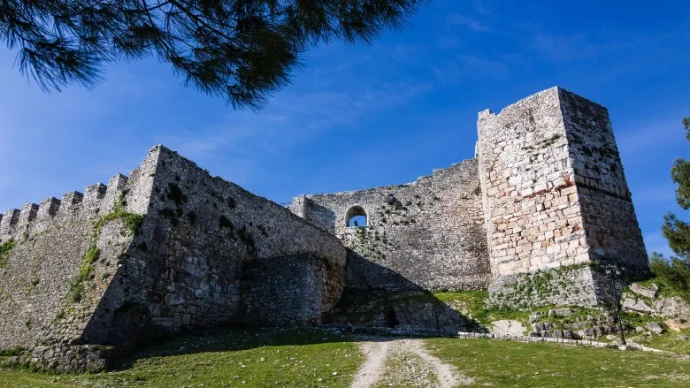
About Butrint
Butrint is an archaeological national park in Albania and a UNESCO World Heritage site, renowned for its ancient ruins dating back as far as the 7th century BC Bronze Age. In fact, classic mythology says that exiles moved to Butrint to escape following the fall of Troy.
Butrint history
Originally part of an area called Epirus, Butrint has been occupied by the Greeks, the Romans, the Byzantines and the Venetians. As a result, Butrint offers a wealth of incredible archaeological structures, including a well preserved Greek theatre, fortifications which have been changed by each civilisation which occupied it, Roman public baths inside which lies a paleo-Christian baptistery and a 9th century basilica.
One of Butrint’s earliest sites is its sanctuary, which dates back to the 4th century and sits on its hill or ‘acropolis’. The sanctuary was named after the Greek god of medicine, Asclepius, and was a centre of healing. Butrint was abandoned during the Ottoman era when marshes started to emerge around it.
Butrint today
However, many of Butrint’s historical treasures remain intact and today the site attracts tourists from around the globe. The great thing about Butrint is the ability to trace the development of a succession of eras through its sites and structures, making it a microcosm of history.
With so much to see, including an onsite museum exploring the site’s history, a visit to Butrint National Park usually lasts around 3 hours.
Getting to Butrint
Approximately 20 kilometres from the modern city of Saranda, Butrint is easily reached by bus. From the port of Saranda, the bus stop is found on foot: on exiting the port turn right and walk for about 220 metres until you see a roundabout with a huge tree in the middle. There is roughly one departure per hour and the bus takes about 30 – 40 minutes and costs 100 lek.
Featured In

Albanian Historic Sites
Discover the best historic sites in Albania, including the ancient cities of Butrint and Apollonia.




















